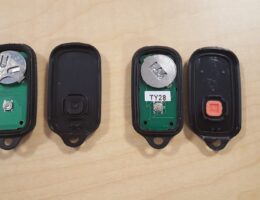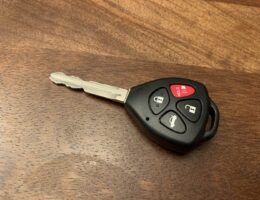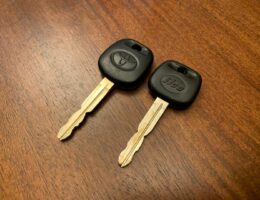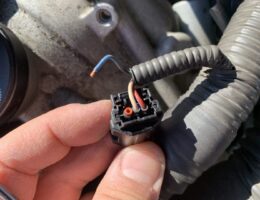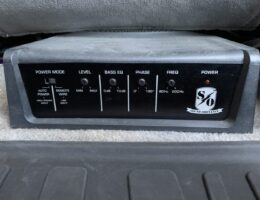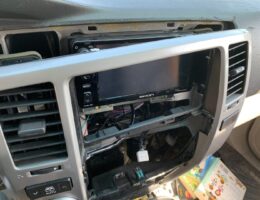The 4th generation Toyota 4runner has a rear wiper blade that is easily replaceable. It sits on a support at the bottom of the rear hatch window when not in use, but uses a spring to press the arm against the window when it operates. The front windshield wipers get the attention usually, but if you use the rear wiper at all, you’ll realize after some time that it will need to be replaced eventually too.
If you own a 4th generation Toyota 4Runner, you should have received a number of key fobs and keyless entry remotes with the car. I look at a variety of aftermarket key fobs and keyless entry remotes that I’ve purchased over the years to compare the quality of their build and operation.
For years, my 4th generation Toyota 4Runner only wipe a portion of the rear hatch window when it should be wiping an entire half circle. It turns out that fixing this problem is very simple, and requires only a slight cut to the plastic rear arm to fix the issue of the rear wiper arm not making full contact with the window.
There are a couple options out there that allows you to use a 2-in-1 remote key for the 4th generation Toyota 4Runner. The best part of all is that you only need to buy a specific remote key for about $20, get the key cut for about $10, and then program the remote and program the key all by yourself for free.
If you ever need an extra key for your 4th generation Toyota 4Runner and don’t want to to pay an arm-and-a-leg for the local dealership to do it, you can purchase a blank transponder key, get it cut at a locksmith, and program it yourself. Programming doesn’t require you to have any equipment or tools, so the only cost to you would be the purchase of a new key and to get it cut by a locksmith.
I got an engine code P0348 on our 2006 Lexus IS350, which led me to believe there was an issue with the camshaft position sensor A, bank 2. It turns out that the sensor connector had a wire that had broken off. To repair this, you will need to either splice the wire back into a terminal lead to be plugged back into the connector, or a new harness can be used to replace the old.
The Sound Ordnance B-8PTD. It’s an 8″ sub that is built into a nice sturdy enclosure. It has a flatter shape and it conveniently fits right under the seat. The install is quite easy; the front passenger seat was removed for easy access to the new subwoofer location. There will be several connections to the subwoofer: one from a grounded location on the frame, one from the head unit, and another from the positive terminal of the battery. There are also connections for RCA cables for the subwoofer to plug into the radio or head unit.
I’ve replaced the head unit/radio in my 2003 Toyota 4Runner countless times for various stereo upgrades, so I’ve gotten familiar with taking the trim apart to get access to the head unit. After doing it so many times, I’ve been able to get my time down to less than five minutes. I figure this tutorial would be helpful for anyone trying to remove their radio and want to get to the head unit quickly.
I recently came across some old photos of the first motorcycle I owned. Gosh, memories just started to flood back as I went through pictures of my old 1999 Honda CBR600 F4. I don’t know if I felt so much nostalgia because of all the good times that I’ve had with the bike, or if it was just because it was the first bike I’ve owned. Perhaps it was because of both reasons. Nonetheless, I wanted to reminisce of some of the memorable times I’ve had with my first motorcycle.


